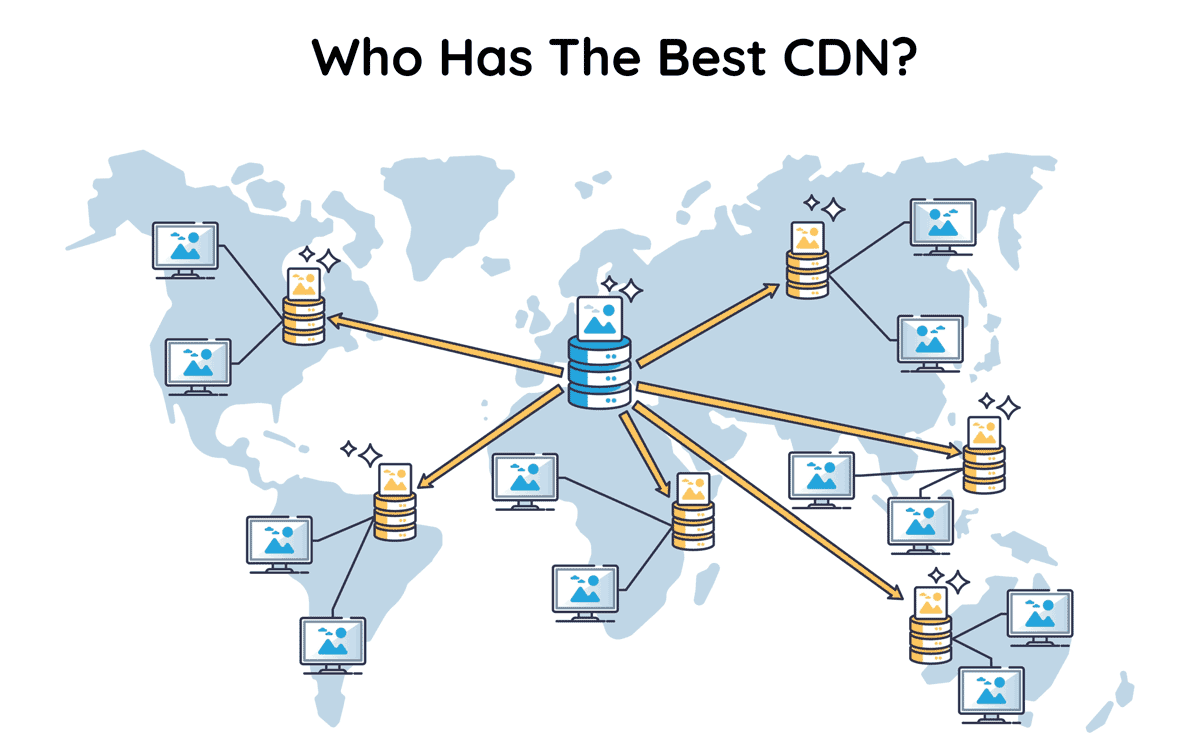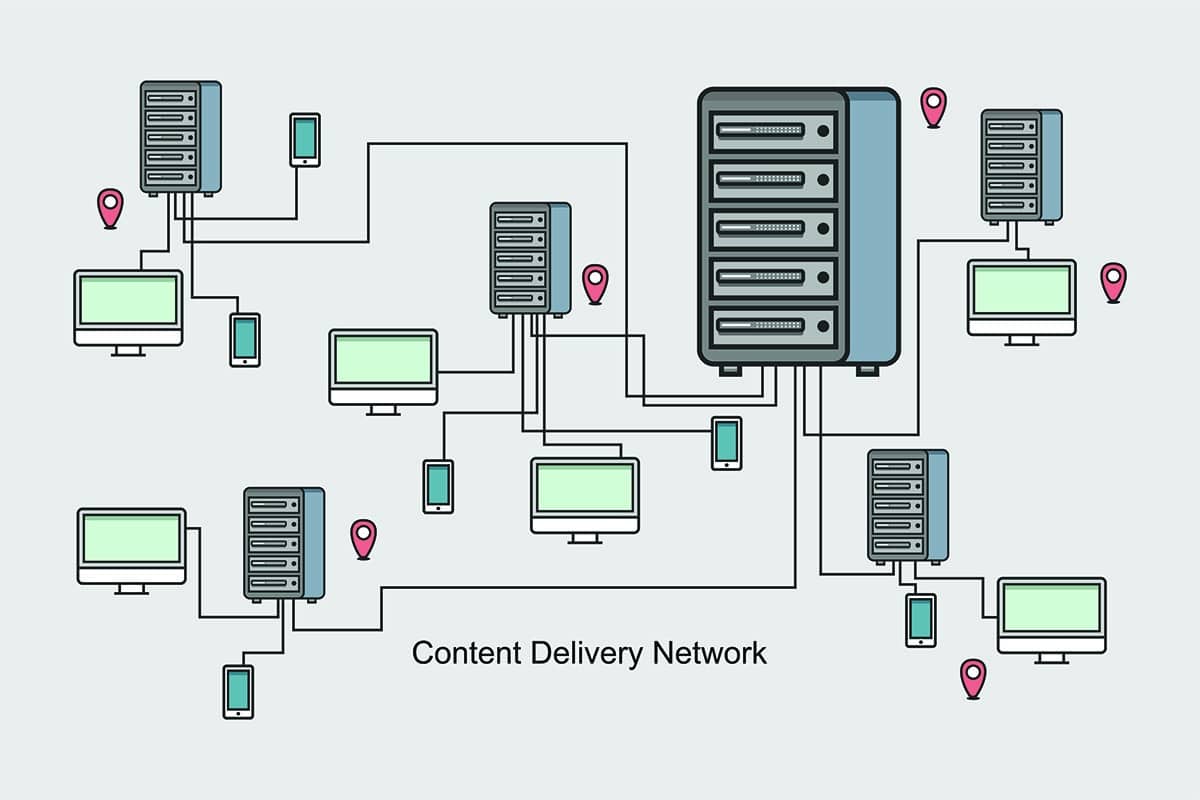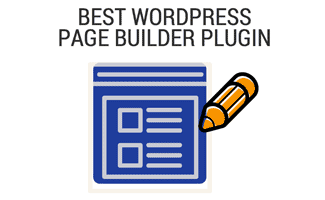When you purchase through links on our site, we may earn a commission. Here’s how it works.

Two seconds or less. That’s how fast people expect a website to load. It’s common knowledge that a site’s speed impacts user experience, but how important is a quick website? While one to two seconds seems exceptionally fast, today’s website visitors are accustomed to short load times, and slower websites are penalized when users abandon a website in favor of a quicker, user-friendly option. In a world of instant gratification and content at your fingertips, a slow website could mean decreased site visits, reduced conversion rates, and low sales revenue.
Various techniques may be applied to maximize your website speed, including changing website hosts, optimizing image file sizes, eliminating specific plugins, and reducing the number of JavaScript and CSS files; however, these changes can be time-consuming and take technical knowledge. For those who want to focus on running their business instead of their website’s infrastructure, consider using a content delivery network (CDN). CDNs decrease the website load speed for each visitor without making any changes to the website itself. Content load time is significantly reduced, making your website faster for users.
What Is A CDN?
A CDN is a group of web servers distributed across multiple geographical locations that provide website content to your user based on their location. CDNs accelerate the speed of websites by caching files—like images and videos—on servers worldwide, so no matter where you’re located, you’ll get the fastest speed possible.
Typically, a website is hosted on a single server. This means that all user requests are sent to the same hardware. Having only one server can become an issue for multiple reasons:
- Since all requests are going to the same place, the time needed to process each request increases.
- Load time increases based on where users are physically located in relation to the server. Users physically farther away from the server tend to have slower load times.
With a CDN, user website requests are directed to the server in the closest proximity, creating faster load times. The more server locations— called points of presence (POP)—the faster the service. Check out this video to learn more about how a CDN works.
We reference a lot of terminology, so check out our reference section at the end for definitions and help understand the jargon.
Why CDNs?
In the early days of the internet, users expected sluggish load times. The 1990s dial-up internet access had people waiting 30 seconds or more for connectivity. It could take several minutes to load a web page, and downloading an audio file could take 10 minutes to a few hours. With the arrival of broadband in the early 2000s came high-speed internet connection and faster websites. Today, users expect load time—the time it takes for a website or web page to appear on the screen—to be quick. And, while internet connection can be blamed for a website’s performance, the speed of a website improves its ranking in search engines and affects the overall success of a website.
There are three key ways that website speed affects your website’s success:
- Conversion: Conversion refers to any desired action you want your user to take. A successful conversion happens when a website user completes a desired goal. This includes subscribing to a newsletter, downloading a PDF, clicking an affiliate link, completing a contact form, or purchasing a product. Website conversion rate is a percentage used to evaluate a website’s performance. A high conversion rate means that you’re getting visitors to do what you want them to do.
- Visibility: Load times influence how easily a user can find your website. Google gives better ranking to websites that load faster. If your website loads slowly, you’re unlikely to find it at the top of Google’s search results. Since the average web user won’t look past the first five listings, appearing high in search engine results is essential.
- Usability: The better a website performs, the happier the user will feel. A fast website will create a better user experience and promote a loyal consumer base.
Top 5 Is Crucial
In a 2019 survey by Unbounce, 70 percent of consumers said that page speed influenced their likelihood of buying a product from the website. For ecommerce sites, slow load times lead to fewer sales. Another survey by digital.com revealed that half of the respondents would abandon their shopping cart if an ecommerce website took longer than six seconds to load. According to a 2019 study by Portent, a website that loads in one second has a conversion rate 3x higher than a site that loads in five seconds. This increases to 5x higher when comparing a site that loads in one second vs. a site that loads in 10 seconds. The highest ecommerce conversion rate occurred on pages with a load time of under two seconds.
Speed Up Your Pages To Sell More
A CDN will not only speed up your websites (helping your search rankings) but also provides security (blocking malicious bots and users), thereby saving bandwidth and reducing your hosting costs.
3 Benefits Of A CDN
There are three significant benefits of having a CDN layer between your website and your visitors:
- Speed: According to a study by Think With Google, if a mobile site takes more than three seconds to load, 53 percent of online consumers will leave that site. So, the top CDN providers can make your site faster, resulting in more traffic. Google loves fast websites because if the site is faster, customers will stay on the website longer and visit more often. This means a higher ranking, which means more consumers will see your site listed higher on search engine results pages (SERPs).
- Security: CDNs can provide a security layer that will prevent malicious bots and hackers from getting to your server. On a shared server, this is particularly significant as one site owner’s lack of a CDN could impact other websites.
- Cost Savings: CDNs can host large media files, reducing your server’s load. This parallel loading of files not only reduces bandwidth (offering a performance benefit) but can significantly reduce your hosting bill as well since you’ll be charged for using fewer resources.

Who Are The Best CDN Providers?
Below we’ve reviewed the top CDN providers in the marketplace today. We share our three category winners, followed by more than a dozen popular providers sorted alphabetically.
Best Value: AWS Review

Since its launch in 2006, Amazon Web Services (AWS) has become the world’s leading cloud computing platform, offering over 200 infrastructure and software services. Among this list is Amazon CloudFront.
The Amazon CloudFront CDN is designed to work with Amazon Simple Storage Service (S3). Amazon S3 is an unlimited hard drive located in a single geographical location. CloudFront replicates the S3 data and sends it to different server locations (i.e. edge locations). CloudFront will deliver content with zero delays if the content has been previously requested and is cached (copied) at the edge location. If the content is not cached at the edge location, CloudFront retrieves the data from S3. Amazon has 450+ server locations worldwide, allowing for better speeds.
Enterprise-level businesses benefit most from CloudFront thanks to its in-depth analytics, great configuration options, and global reach. Novices might find CloudFront’s control panel overwhelming—at least initially—and support isn’t free. Prices vary by region, but Amazon offers a free tier of 1 TB of monthly data.
| Pros | Cons |
|---|---|
| 400+ POPs in 90+ cities and 48 countries | Works with Amazon S3, which is sold separately |
| Detailed, real-time reporting | Customer support costs extra |
| Multi-tier cache for static content | SSL is an additional $600 per month |
| Includes media optimization and video streaming | |
| Free plan available, no up-front fees | |
| Integrates with WordPress, Drupal, and Sitecore | |
| No contracts | |
| Trusted by big brands, including Hulu, Instacart, PBS, and Slack |
Pricing
Amazon CloudFront pricing is based on location. In the United States, prices are the following:
| First 10 TB | $0.085/GB |
| Next 40 TB | $0.080/GB |
| Next 100 TB | $0.060/GB |
| Next 350 TB | $0.040/GB |
| Next 524 TB | $0.030/GB |
| Next 4 PB | $0.025/GB |
| Over 5 PB | $0.020/GB |
Best CMS Integration: CloudFlare Review

Cloudflare offers free and commercial cloud-based services to help make your website faster and more secure. Cloudflare gets points for its simple setup and ease of use. Plus, it includes lots of features and provides excellent performance overall. The platform regularly adds new features. One of the great things about Cloudflare is its CMS integration (it works with all major content management systems, including WordPress, Joomla, and Drupal).
Cloudflare has 285 data centers worldwide. Along with caching data, Cloudflare’s web filtering blocks bots and spam and protects you from phishing, malware, ransomware, and other attacks. It offers mobile and image optimization.
In 2022, IDC MarketScape named Cloudflare a leader in CDN network services. Along with detailed analytics and security services, IDC praised CloudFlare for its mobile edge computing. For an ecommerce website, choosing a CDN like Cloudflare could boost sales, thanks to its mobile services. According to 2023 report by Tooltester, the average mobile web page takes 8.6 seconds to load. Another report from Google Research showed 59 percent of shoppers surveyed said being able to shop on mobile is essential when picking which brand to buy from.
Cloudflare’s free plan gives you access to all services, and upgrading to the Pro plan costs a reasonable $20 monthly. Most plans can be activated in under 15 minutes, with free plans taking up to 24 hours.
| Pros | Cons |
|---|---|
| 250+ POPs in 100+ countries, including Mainland China | No contracts (but you can negotiate an agreement if you ask) |
| Real-time reporting for paid plans | SSL is a paid add-on |
| Automatic static content caching. Instant cache purge included | Must pay extra for features like 24/7 support, 100% uptime guarantee, and customization |
| 100% uptime guarantee for Business and Enterprise accounts | |
| Automatic image optimization for paid plans | |
| Video streaming available at additional cost | |
| Customization options available | |
| Free trial for Enterprise plan | |
| Free plan available | |
| Works with any CMS | |
| 24/7 phone support for Enterprise | |
| Customers include Garmin, L’Oreal, and Shopify |
Pricing
Cloudflare doesn’t charge based on bandwidth. Instead, customers are charged by the number of websites the service covers.
| CloudFlare Pro | $20/month and $5 per additional website |
| CloudFlare Business | $200/month |
| CloudFlare Enterprise | Custom pricing |
Best For Open Source: jsDelivr Review

jsDelivr is a free CDN provider for open-source projects. jsDelivr includes no bandwidth limits or premium features. The service is entirely free.
jsDelivr uses a multi-CDN infrastructure that combines the CDN networks of Cloudflare, Bunny, Fastly, and GCore for more than 540 server locations. Custom servers are used in areas where CDNs have no presence. Other sponsors include NS1, Render, ClouDNS, Alolia, and DigitalOcean.
| Pros | Cons |
|---|---|
| 540+ POPs | No uptime guarantee |
| Free service | Not a lot of information online about them |
| Robust network | No 24/7 support |
| WordPress integration | |
| SSL included | |
| Real-time reporting | |
| No contracts |
Did You Know?
Pricing
jsDelivr is a free service.

CDN Providers Reviewed (A – Z)
Popular CDN providers are sorted alphabetically. Let us know which one you’re leaning toward in the comments!
Akamai | Azure | CacheFly | CDN77 | Edg.io | Fastly | Imperva | jsDelivr | Linode | Parse | Photon by Jetpack | Rackspace | StackPath | TinyCDN
Akamai Review

Akamai is a massive name in the CDN world. As one of the oldest and most respected providers, Akamai provides fantastic performance; however, setting up this CDN might take a lot of work for a beginner. Akamai only offers a free trial on select features, and its pricing isn’t transparent. You’ll need to contact the company directly to get a quote. Still, the Akamai network dwarfs most of the competition, offering superior performance and availability.
Akamai truly shines when it comes to video and image management. It automatically reduces your page size by optimizing content and supports high-quality video playback. Akamai’s Adaptive Media Delivery tool optimizes adaptive bitrate (ABR) streaming to securely deliver high-quality video to users across all devices and connection speeds.
Akamai claims its customers include the top 10 video-streaming services and top 10 video game companies.
Akamai acquired Linode in March 2022 for $900 million. In February 2023, combining Linode’s cloud computing with its content delivery, Akamai launched Akamai Connected Cloud. This all-in-one CDN and cloud services platform offers cloud computing, security, and content delivery.
| Pros | Cons |
|---|---|
| 4,200+ POPs in 130+ countries | Pricing is not listed online |
| Real-time reporting | No uptime guarantee |
| Complete control over cache | Free trial only on select features |
| 100% uptime guarantee | Not novice-friendly |
| SSL included | |
| Integrates with WordPress and most CMS | |
| Customers include Airbnb, Adobe, and Mailchimp |
Pricing
Akamai doesn’t publish pricing information on its website; however, you can explore pricing on Linode’s website using their Cloud Pricing Calculator.
Azure Review

Microsoft’s Azure is a collection of cloud platforms for hosting, application development, cloud computing, monitoring, ecommerce, data analysis, and more. Azure CDN works with providers Akamai and Verizon and offers three CDN plans for customers to choose between: Standard Akamai, Standard Verizon, and Premium Verizon. Each plan has unique offerings, which you can view on Microsoft’s Azure CDN Comparison page.
Those looking for a customizable CDN with Microsoft integration should consider Microsoft’s Azure. Create a free account and get a $200 credit (to use within 30 days) and over 55 free services. Like other top CDN providers, Azure uses a pay-as-you-go model, where you’re charged for the level of bandwidth you use. The sheer amount of features may be overwhelming for a newbie, but it works well when using other Azure services.
| Pros | Cons |
|---|---|
| 118 POPs across 100 cities | Average performance |
| Real-time reporting | Tech support costs $29 per month |
| Full control of caching | |
| 100% uptime guarantee | |
| SSL included | |
| No contracts | |
| Free trial | |
| 24/7 support for most products | |
| Customers include Chipotle and Heineken |
Pricing
Microsoft Azure pricing is based on location. In the United States, prices are the following:
Standard Akamai and Verizon
| First 10 TB per month | $0.081/GB |
| 10-50 TB per month | $0.075/GB |
| 50-150 TB per month | $0.056/GB |
| 150-500 TB per month | $0.037/GB |
| 500-1,000 TB per month | $0.028/GB |
| 1,000-5,000 TB per month | $0.025 per GB |
| Over 5,000 TB per month | Contact Azure |
Premium Verizon
| First 10 TB per month | $0.158/GB |
| 10-50 TB per month | $0.14/GB |
| 50-150 TB per month | $0.121/GB |
| 150-500 TB per month | $0.102/GB |
| 500-1,000 TB per month | $0.093/GB |
| 1,000-5,000 TB per month | $0.084/GB |
| Over 5,000 TB per month | Contact Azure |
CacheFly Review

CacheFly markets itself as the alternative to generic, oversubscribed CDNs, offering custom-design solutions and a tailored contract—including month-to-month billing and specific POPs. With an easy 10-minute setup and access to 24/7 customer support, newbies to the world of CDNs may gravitate to CacheFly’s ease-of-use and customer-centric approach. Reviewers rave about CacheFly’s friendly and responsive service.
Plus, CacheFly is fast. If you’re looking for a CDN for low-latency video streaming or game streaming, CacheFly makes an ideal candidate. CacheFly also offers media optimization with image compression, available at an added cost.
| Pros | Cons |
|---|---|
| Up to 109 POPs (Free, Business, and Enterprise Tiers contain different access to global POPs) | Image compression is added cost |
| Real-time reporting | Advanced reporting is an additional cost |
| Clears cache using instant purge | |
| 100% uptime guarantee | |
| Best-in-class video streaming | |
| SSL included | |
| 30-day free trial | |
| Integrates with WordPress, Joomla, and Drupal | |
| 24/7 customer service | |
| No contracts |
Pricing
| Free (5 TB transfer) | $0 per month |
| Business (12 TB transfer) | Starting at $295 per month |
| Enterprise (354 TB transfer) | Starting at $2,495 per month |
CDN77 Review

Although it is one of the newest CDNs, CDN77 is starting on the right foot. Fast, high-quality video streaming and the simplicity of integration with CMS are among the top reasons it appeals to users. CDN77 targets large-scale content providers and corporations, but it also offers CDN to individual websites. Setup and configuration are easy.
| Pros | Cons |
|---|---|
| 233 POPs on 6 continents | No uptime guarantee (offers credit for downtime) |
| Detailed, real-time reporting | Not as many advanced settings |
| Clears cache via instant purge | Slower than competitors, but not by much |
| Free SSL | Video streaming is available via a separate service |
| Great for video blogging because it offers specialized services for HD video streaming | |
| Customizable | |
| 14-day free trial | |
| Easy CMS integration with WordPress, Magneto, Drupal, Joomla, and Social Engine | |
| No contracts | |
| 24/7 support |
Pricing
CDN77 organizes pricing based on monthly traffic. There are predefined monthly plans up to 150 TB:
| Up to 6 TB | $199 per month |
| Up to 25 TB | $385 per month |
| Up to 50 TB | $580 per month |
| Up to 100 TB | $990 per month |
| Up to 150 TB | $1,390 per month |
From there, CDN77 offers customizable monthly plans (150 TB – 50 PM) and high-volume plans (50 PB – 500 PB+). Both customizable plans and high-volume plans require a consultation with a CND77 representative.
Edgio Review

Edgio (formerly EdgeCast by Verizon) caters to larger enterprise-level sites. While any website can use Edgio, it’s primarily geared towards revenue-generating, database-driven sites, like travel and ecommerce, that serve dynamic content to their users.
Edgio claims to cache at least 95 percent of dynamic data, leading to quick load times.
Static vs. Dynamic
Edgio uses CDN-as-JavaScript for edge computing, which works by putting data in the browser before the user requests it. Edgio has a quick setup (less than two minutes) and includes many features that may be additional costs through other companies (optimization, tech support, etc.)
| Pros | Cons |
|---|---|
| 300+ POPs across the globe | We could not find any CMS integrations |
| Real-time reporting | Contracts |
| Complete control of caching and purge capabilities | Pricing is not on the website |
| 100% uptime guarantee | |
| Includes image optimization, live streaming, and video on demand. | |
| SSL | |
| Free trial | |
| 24/7 support | |
| Used by Shoe Carnival, Ameritrade, and Yahoo |
Pricing
Edgio has two payment tiers: Free and Enterprise. Prices for Enterprise vary, so you’ll need to contact Edgio directly to get a cost estimate.
Fastly Review

Fastly delivers fast speeds and vast configuration options. Like Akamai, Amazon, and Cloudflare, Fastly was named one of the top CDN service providers of 2022 by IDC Marketscape. IDC praised Fastly for its scalable and customizable services, easy-to-navigate self-service portal, security, and quality customer support. It was also noted that Fastly’s network is well-suited for live-streaming events.
Fastly only offers email support for its free tier. Those with a paid plan can access phone support, 24/7 incident response, a private Slack channel, and additional Fastly Cloud Engineer support.
| Pros | Cons |
|---|---|
| 80+ POPs globally | No uptime guarantee |
| Real-time reporting | Email support only for free plan |
| Cache fast purge | |
| SSL | |
| No contracts | |
| Free trial (up to $50 of traffic tested) | |
| 24/7 support for paid plans | |
| Used by wikiHow and Reddit |
Pricing
Fastly has a minimum of $50/month based on your bandwidth and request usage. In North America, prices are as follows:
| First 10TB | $0.12 |
| Over 10TB | $0.08 |
| Per 10,000 requests | $0.0075 |
Imperva Review

For those needing a CDN with robust security features, consider Imperva. Imperva (formerly Incapsula) offers website security, DDoS protection, and a web application firewall. Imperva’s focus is protecting data— it even provides solutions that work with your current CDN. For example, for organizations using multiple CDNs, Imperva recommends various configurations for caching static content that poses minimal security risk vs. dynamic content that is a more significant attack target.
The simple setup is one of the many reasons users love it. Freelance web developers and agencies are also heavy users of this service. A free plan is available if you wish to test the waters.
Imperva also promises up to 70 percent decreased bandwidth consumption and up to 50 percent increase in connection speed, saving you money in the long run.
| Pros | Cons |
|---|---|
| Monitors the overall health of your website | No 100% uptime guarantee (99.999%) |
| Real-time reporting (Enterprise only) | Must upgrade plan for features that competitors give with basic plans |
| Real-time event monitoring | |
| Static and dynamic caching | |
| SSL for any paid plan | |
| 7-14 day free trial | |
| No contracts | |
| Integrates with WordPress, Joomla, and more | |
| 24/7 support (Enterprise only) | |
| Used by Wix, AARP, and GE |
Pricing
| Pro Plan | $59/month per website |
| Business Plan | $299/month per website |
| Enterprise Plan | Must contact Incapula |
Photon By Jetpack Review

Jetpack is a WordPress-only image caching service. Most WordPress users rely on Jetpack for site statistics. If sharing pictures is what you mainly do, Jetpack is a good choice for you; however, it is missing many features. Still, it offers good performance and ease of use.
| Pros | Cons |
|---|---|
| Easy setup and installs directly from the WordPress dashboard | Only works with WordPress sites |
| Site statistics included | No uptime guarantee |
| Image and static file optimization free | Video hosting costs extra |
| 14-day money-back guarantee | More of a social, image-sharing tool vs. a fully robust CDN |
| When installed, it activates a lot of plugins that slow your computer speed, but these can be disabled |
Pricing
| Starter (1 GB) | $5.95 per month |
| Security (10 GB) | $19.95 per month |
| Complete (1 TB) | $49.95 per month |
Rackspace Technology Review

Rackspace began in 1988 as a hosting company that provided end-to-end customer service. When cloud computing became popular in the mid-2000s, Rackspace seized the opportunity to develop a cloud management service, providing support for cloud infrastructure and tools. In 2011, Rackspace partnered with Akamai to offer its customers a CDN powered by the Akamai network.
Rackspace’s CDN is easy to set up and use. It only includes some of the features you’ll find in the top competition; however, it provides good CMS integration, and customer support is excellent.
Rackspace’s focus is clearly on cloud services; they provide little information on CDN services. Even basic information about its service takes a lot of work to find on the website. Still, if you’re using other Rackspace services, you might also consider its CDN.
| Pros | Cons |
|---|---|
| 200 POPs globally | No free trial |
| Powered by Akamai | More than average prices |
| Real-time reporting | |
| 100% uptime guarantee | |
| Integrates well with other Rackspace solutions (hosting, DNS, etc.) | |
| SSL | |
| Good CMS integration | |
| No contracts | |
| 24/7 support | |
| Customers include Ulta, J.Crew, and Mazda |
Pricing
Pricing is based on location and usage. In North America, pricing is as follows:
| First 1 TB | $0.10/GB per month |
| Next 40 TB | $0.09/GB per month |
| Next 150 TB | $0.07GB per month |
| Next 300 TB | $0.045/GB per month |
| Next 524 TB | $0.035/GB per month |
| Next 4 PB | $0.025/GB per month |
| Over 5 PB | $0.02/GB per month |
StackPath Review

StackPath, previously known as MaxCDN, has an excellent reputation and integrates well with many content management systems (think WordPress, Drupal, Joomla, etc.). StackPath offers all the features you want in your CDN provider—like intelligent caching and a 100 percent uptime guarantee—and works for large and small traffic sites. StackPath’s user-friendly CDN may be a good choice if you’re a beginner.
| Pros | Cons |
|---|---|
| 70+ POPs in 43 locations worldwide | Free test account and 100% money-back guarantee within the first 30 days |
| Real-time reporting analytics | |
| Full control of caching | |
| 100% uptime guarantee | |
| Video streaming included | |
| SSL included | |
| No contracts | |
| CDN-specific company (i.e., CDNs are their core competency) | |
| 24/7 support (we’ve found the chat to be very responsive) | |
| Used by Kodak, Garmin, and the Washington Times |
Pricing
| 1-100 TB per month | $0.044/GB |
| 100 TB to 1 PB per month | $0.033/GB |
| Above 1 PB | Contact StackPath |
TinyCDN Review

TinyCDN is a very affordable CDN that markets towards smaller websites using static content. It has a fast setup and is easy to implement on your site. You can rely on TinyCDN to speed up your sites; however, it does not have many of the features you expect from a CDN provider.
| Pros | Cons |
|---|---|
| Very reliable | Best for small to medium size networks, not enterprise level |
| Easy-to-use interface | No CMS integrations |
| No contracts | No uptime guarantee |
| Free 5-day trial | No 24/7 support |
| No SSL | |
| No real-time reporting |
Pricing
| Start (100 MB) | $2 per month |
| Small (250 MB) | $4 per month |
| Medium (500 MB) | $7 per month |
| Max (1000 MB) | $10 per month |
What Happened To Linode?
Akamai acquired Linode in early 2022, and Linode has now fully integrated into the Akamai brand. Linode’s services are now referred to as Akamai’s cloud computing services.
Terms & Definitions
Below are some terms you may want to know the meaning of when dealing with CDNs.
- Bandwidth: the amount of data carried from one point to another in a period of time. The higher the bandwidth, the better performance.
- CMS (Content Management System): a computer program that allows you to publish, edit, and modify content from a central interface. Examples: WordPress, Drupal, Joomla!, etc.
- Distributed Denial of Service (DDoS): an attack causing service denial for users of the targeted system. A large amount of incoming messages to the target system forces it to shut down, which denies service to actual users.
- SSL (Secure Sockets Layer): a protocol that is commonly used for managing the security on the Internet for message transmissions.
- Web Application Firewall (WAF): this controls the input, output, and access to, from, or by an application or service. The WAF monitors the system service call and blocks the ones that don’t meet the configured policy of the firewall.
When choosing a CDN provider, you must consider a few things: speed, bandwidth, real-time monitoring, price, etc. It’s going to vary for each person and company. Some CDN providers do best with enterprise-size sites, while others do great with smaller ones.
Best CMS and CDN Combinations
If you want an easy, powerful setup that works nearly out of the box, consider pairing a CMS (Content Management System) with your chosen CDN. WordPress and Cloudflare, for example, integrate in an easy-to-use plug-and-play fashion. Find out our picks for the best CMS providers this year.
Which CDN are you leaning towards? Let us know in the comments!
Tagged With: Comparison


